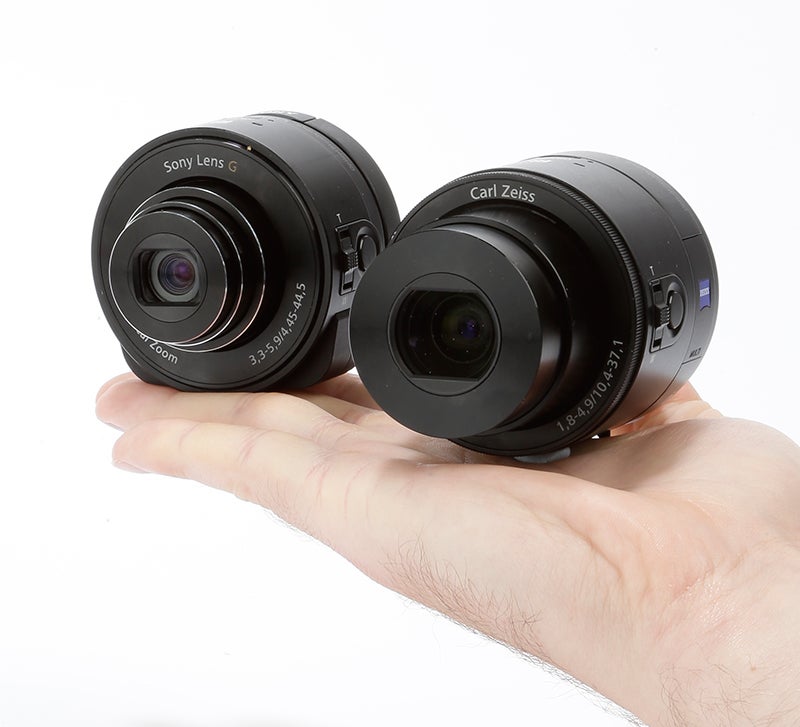Sony QX100 Review - The Sony QX100 was released as part of a pair of now models which, along with the Sony QX10, are aimed at transforming smartphone photography. Read our Sony QX100 review to find out whether it's successful or otherwise
Sony QX100 Review
Owing to the fact that the Sony QX100 was released as a pair with the QX10, and as a result of the concept sharing a lot of features and characteristics with one another, we’ve reviewed the two together.
The Sony QX cameras are a innovative idea and a first of their kind. Designed to merge the technology that’s used within Sony’s compact cameras into a small handheld unit that can be controlled wirelessly by a mobile device via Wi-fi or NFC, it’s easy to get the impression that this new concept is all about bringing new levels of fun and creativity to taking photos with a smartphone.
In truth it is, but there’s a lot more to these QX cameras than first meets the eye and with their larger sensors and impressive zooms they’re also capable of bringing better image quality and more versatility to the increasing number of people who rely on a smartphone to take photos.
Not content with producing a single version of the QX camera, Sony has developed two models to provide consumers with a choice of whether they’d prefer to get closer to the subjects they’re photographing with a 10x optical zoom, or to record more impressive levels of detail and better image quality thanks to the inclusion of a large sensor. Is this technology likely to catch on? Let’s find out…

Sony QX100 and QX10 Review – Features
The obvious difference between the QX10 and QX100 is their size. The QX10 is equivalent to half the size of the QX100 in terms of its length, and the reason for it being more petite comes down to the way it features a smaller sensor than the 1.0inch 20.2MP Exmor R CMOS chip as located within the QX100.
Whereas the QX100’s sensor is exactly the same as that used within Sony’s premium compact camera, the RX100 II, the QX10’s 18MP Exmor RCMOS chip is the 1/2.3in type, derived from the company’s WX200 point-and-shoot compact. Naturally, with different sized sensors come different ISO ranges, and the QX100 offers the slightly better span of the two, shooting between ISO 160-25,600 compared to the QX10, which shoots as high as ISO 12,800.
Another key difference are the optics both units use. With the QX100 essentially being an RX100 II without a body and viewfinder, it’s no surprise that it features the same 3.6x Carl Zeiss optic, which boasts a fast f/1.8-4.9 variable aperture and focal length that’s equivalent to 28-100mm.
In comparison, the QX10 has a 10x optical zoom that’s equivalent to 25-250mm with an f/3.3-5.9 variable aperture. What you have here then are two completely different cameras – the QX10 is destined to appeal to the mass market of smartphone users who’d like the benefit of a more powerful zoom, and the QX100 is ultimately all about capturing the best image quality and providing the opportunity to get more creative with depth of field thanks to its faster maximum aperture.
One important point to consider is that neither QX model offers the support of Raw shooting, so it’s JPEG for stills, while video is recorded in the MP4 format at a resolution of 1440×1080@30fps.




